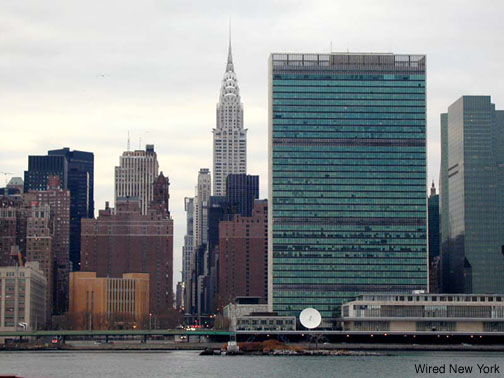
Office: HGH 210; phone: (408) 924-5378
Email: wooda@email.sjsu.edu
Web: http://www.sjsu.edu/faculty/wooda
 |
Dr. Andrew Wood Office: HGH 210; phone: (408) 924-5378 Email: wooda@email.sjsu.edu Web: http://www.sjsu.edu/faculty/wooda |
Reading:
Ibelings, H. (1998). Supermodernism: Architecture in the age of globalization. Amsterdam: Nai.
| Note: These comments are not designed to "summarize" the reading. Rather, they are available to highlight key ideas that will emerge in our classroom discussion. As always, it's best to read the original text to gain full value from the course. |

Consider this illustration by Josh Agle (a.k.a. Shag), entitled "The Sky Lounge." The piece draws from 50s and 60s imagery that evokes the "cosmopolitan" freedom of the "jet set" crowd. To be in this crowd - to be hip, mobile, a "citizen of the world" - was to be "modern." Ibelings provides a brief introduction to modernism as a counterpoint to postmodernism. While the piece focuses on architecture - particularly the so-called international style - one should recall that modernism and postmodernism represent a large set of questions about the validity of narrative, the locus of power, and the potential of truth. The excerpt positions modernity and postmodernity within a larger phenomenon: globalization, a process marked by the decreasing significance of national and cultural markers in identity construction and illustrated by the postwar fascination with the "jet set" lifestyle.
A measure of modern architecture's success may be found in its repetitious placement worldwide, its power to ignore local design, histories, and ecological realities. Ibelings initially identifies examples of this international style in big hotels "which may have belonged to different companies but which nevertheless could be seen as part of one big - American - chain" (p. 34). This uniformity becomes associated with the freedom of business-people and global travelers to travel freely without ever feeling far from home. How did these structures, along with "glass box" office towers and similar genres, come to be? Ibelings notes that the postwar United Nations provides a clue, with its promise of a unified planet under international law. The 1960's emergence of a "global village" (inspired by satellite television and the newly born internet) simply extends this trend.

So, what does international-style architecture look like? There's no simple answer to this question, but several components are commonly found: (1) the use of simple, geometrical forms; (2) attempts to craft an experience of transparency and light; (3) focus on functionality and technological innovation; (4) a lack of correspondence with nearby buildings. A quintessential example may be found in the United Nations Secretariat Building (1947-1952). Inspired by Le Corbusier's minimalist design, the UN Building offers no hint of historical or physical relationship with its surroundings. Its green glass and metal bands offers its viewers and inhabitants a clean, crisp, and modern addition to the skyline (note: some information provided by Skyscrapers.com). Through the reading, Ibelings emphasizes that modern architecture, often mocked by postmodernists as soulless and brutal, has returned to the global stage as more business-people and tourists seek consistency in an ever-changing world.
Off-campus webpage
Note: These pages exist outside of San Jose State University servers and their content is not endorsed by the page maintainer or any other university entity. These pages have been selected because they may provide some guidance or insight into the issues discussed in class. Because one can never step into the same electronic river twice, the pages may or may not be available when you request them. If you have any questions or suggestions, please email Dr. Andrew Wood.